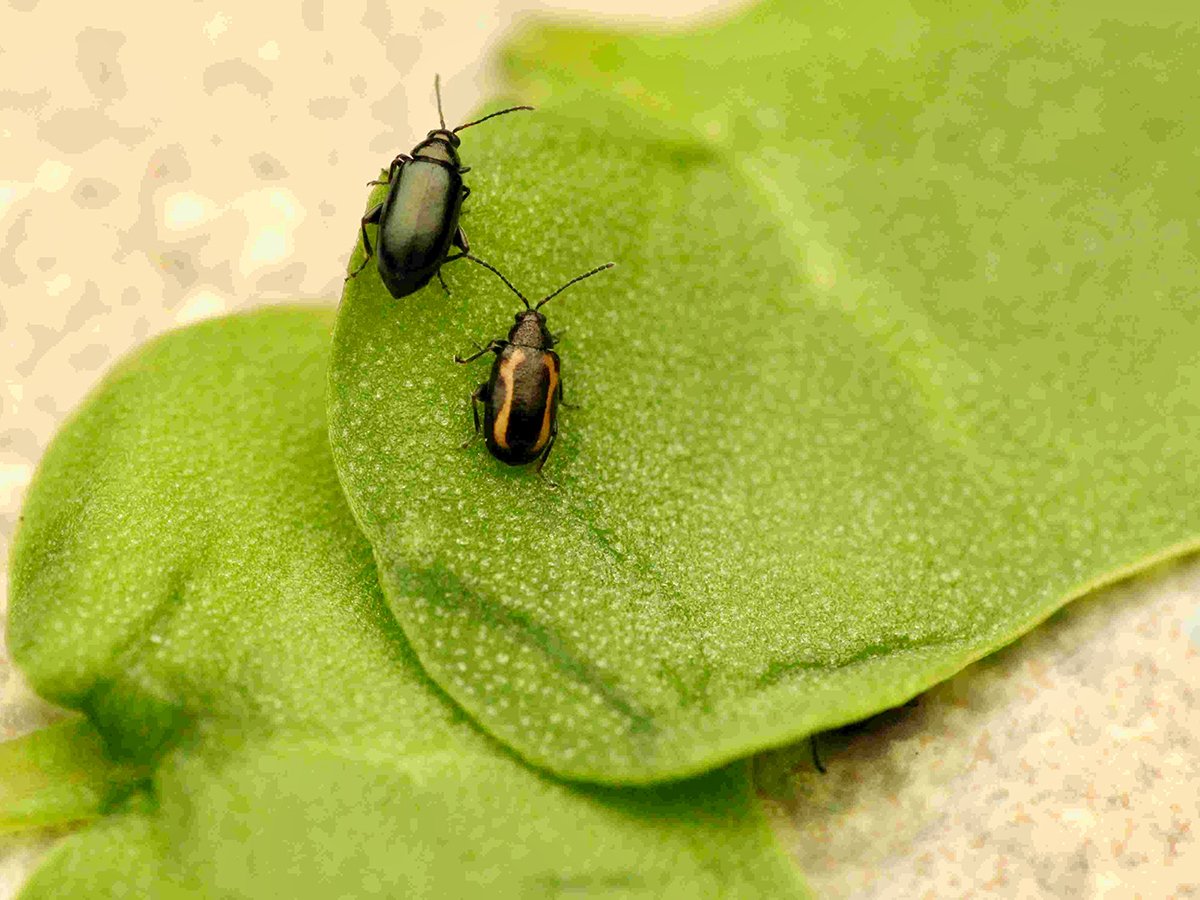Cabbage seedpod weevil and wheat midge are the biggest insect threats in irrigated crops this year, says Alberta Agriculture insect management specialist Scott Meers.
“This one’s truly an irrigated insect pest,” Meers said about the cabbage seedpod weevil during the Jan. 31 Irrigated Crop Production Update in Lethbridge.
He said last year was an anomaly in the region because not every canola seed field had to be sprayed for the pest.
Growers shouldn’t expect the same grace in the coming crop year, he added.
Read Also

Research looks to control flea beetles with RNAi
A Vancouver agri-tech company wants to give canola growers another weapon in the never-ending battle against flea beetles.
“I would expect that there’s enough cabbage seedpod weevil, given the type of winter we’re going through, that we’ll see them in significant numbers next year. The population, I think, is poised for rebound in 2012.”
Weevil surveys have found the insects throughout southern Alberta and in pockets around Calgary and eastward. However, they have never moved as far north as Red Deer.
Meers speculates there is a natural control limiting the weevil’s northward spread.
Researchers headed by Hector Carcamo of Agriculture Canada are studying control measures and have noticed trends.
“When we spray at the proper timing for cabbage seedpod weevil, we have lower lygus populations for the rest of the season and we have lower diamondback moth populations through the rest of the season, but we don’t know where the thresholds are yet,” said Meers.
He cautioned farmers to spray for seedpod weevil at the proper time, during early canola flower, rather than late bud or pre-bolting.
Otherwise, they run the risk of killing beneficial insects.
“If you spray too early with your last herbicide application, which has kind of become the practice, we don’t know what you’re doing to the populations of the pest insects, but I do know that you’re killing all your beneficials when you may not have to.”
On the wheat midge front, Meers said the pest has been working its way south in Alberta and has been spotted in the municipal districts of Willow Creek and Taber and County of Lethbridge.
“It’s right on your doorstep here. Wheat midge loves moisture, so if you’re growing wheat on wheat or wheat adjacent to wheat on irrigation, it’s a perfect scenario.”
Meers said yield losses could be serious unless farmers scout for the pest and take timely action.
Bertha armyworms are not expected to be a major problem this year, although outbreaks are possible in central Alberta north of Vulcan up to Two Hills. There’s also a pocket of possibility in the Peace River and Fort Vermilion area, based on last year’s trap evidence.
Diamondback moth levels are a wild card, Meers said. The pest migrates into the province in varying levels each year, depending on wind and weather.
There were 29 monitoring locations for the moth in Alberta last year and presumably that many this year, so migration will be noted.
Timing is also critical for the pea leaf weevil. Last year’s numbers were low because of the cool, wet spring. The insects will not fly at temperatures below 15 C so pea development was well along before the weevils entered fields, which limited the damage.
“This is a hard one to read,” Meers said. “Just because we have low numbers last year at our survey doesn’t mean that we have low numbers next year because they always come into the pea fields. It’s just the timing (of when) they come in.”
He said the Vulcan area is the centre of the pea leaf weevil activity in Alberta, but areas south of the Trans-Canada Highway have enough residual populations to create problems if weather favours them.
Cereal leaf beetle is established in southern Alberta, and Meers warned producers to scout and note any larvae on the flag leaf and the leaf below that. The threshold for spraying is one larva per flag leaf.
“The good news so far is that there’s a beneficial insect that showed up with this pest and it seems to be holding it in background levels,” said Meers.
He said he and his colleagues are watching for the western bean cutworm, which is tolerant to B.t. corn and B.t. soybeans and has appeared in Ontario. It may be spreading into Manitoba and westward. Pheromone traps will be in place to scout for them.

















